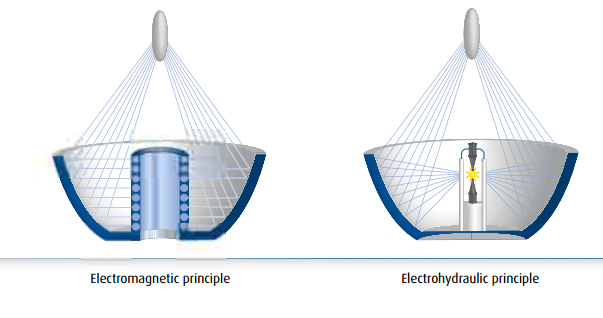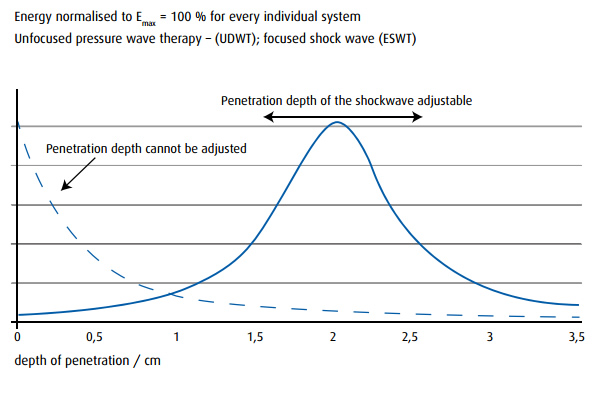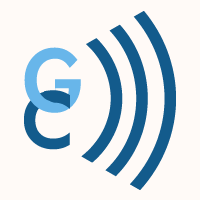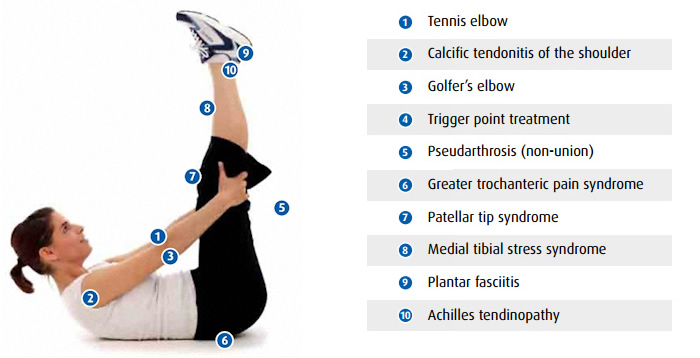Shockwave Therapy
Basic principle of extracorporeal shockwave therapy
Extracorporeal Shock Wave Therapy (ESWT) is a non-invasive procedure for the treatment of acute and chronic pain of the musculoskeletal system. Acoustic shock waves are characterized by a pressure surge with an extremely short rise time, which is then followed by an exponential drop in pressure and a brief phase of negative pressure. The shock waves used in ESWT focus or develop in the target tissue at the point where the pain is originating from. They cause an improved local blood circulation and metabolism. The primary means by which extracorporeal shock waves affect living tissue is based on the transformation of mechanical stimuli into biochemical or biomolecular signals.
What is the story behind ESWT?
The science behind ESWT is analogous to that of lithotripsy, a technology that makes use of acoustic shockwaves to break up kidney stones without surgery. The technique of using shockwaves to break up kidney stones has been around for nearly a quarter of a century. In the process of treating hundreds of thousands of patients, specialized machines were developed specifically with the idea of using the generated shockwaves in other parts of the body, e.g. to treat musculoskeletal conditions.
Conditions treatable with ESWT
Chronic pain is recognized as a worldwide epidemic. Common conditions such as Tennis Elbow, Golfers Elbow, calcaneal heel spurs, calcifications of the shoulder joint and ischemic muscle bands (trigger points) are a major cause of chronic pain. The use of ESWT to safely and successfully treat these conditions is supported by a wealth of clinical experience and scientific evidence.
In addition, shockwave technology is a valuable diagnostic tool for the precise localization myofascial trigger points.
Contraindications for ESWT?
ESWT is typically not used in the presence of bone tumors, certain metabolic bone conditions, and certain nerve or circulation disorders. ESWT is also not used in pregnant patients and at locations where there is an open growth plate. It is currently not used in areas where an infection is present. It also should not be used in conditions or at locations where gas or air is present in the body. On the basis of the patient’s general condition, the experienced, trained medical user in charge must decide whether the planned use is possible or not.
Effectiveness of focused ESWT
Extracorporeal shockwaves can be seen as a mechanical stressor that is able to induce biochemical changes in living tissue and which can ultimately influence gene expression in cells at the molecular level, consequently, when used selectively, they can produce a specific tissue reaction. This process is referred to as mechanotransduction. Mechanical stimuli affect almost all cellular functions of living tissue such as growth, cell differentiation, cell migration, protein synthesis, physiological apoptosis and tissue necrosis. Mechanical forces have a direct influence on the form, and thereby on the function, of tissue. Furthermore new studies show that ESWT is able to stimulate endogenous lubricin production in tendons and septa.
Scientific studies and publications, using the highly accurate piezo-shockwave technology, have confirmed the
effectiveness of focused shockwaves for ESWT as well as trigger point diagnosis and treatment.
ESWT is one of the very few medical technologies that is effective at treating chronic injuries. It is suggested that ESWT can “jump start” the healing process in chronic, non-healing injuries and reintroduce the acute phase of healing.

Time until the treatment takes effect
Experience shows that many patients report an initial improvement almost immediately following treatment. This effect is usually (but not always) temporary, and is associated with the analgesic effect resulting from hyperstimulation of the tissue by ESWT.
It takes several days for injuries to begin to heal, and many patients see an improvement before the end of the second week. Depending on the diagnosis, the healing process may take several weeks or even months to be completed, but pain relief often precedes complete healing. In many cases it is recommended to stop the physical stress or to adjust the physical stress to an individually appropriate level for several weeks.
Safety
The basic technology involved in extracorporeal shockwave therapy has been used for decades to treat – quite literally – millions of people. The technology has been used most extensively in Europe, particularly in German-speaking countries where use of this technology was pioneered. During all this time, ESWT of the musculoskeletal system has been found to have virtually no serious side-effects when used by trained physicians. In fact, even mild side-effects such as tingling, aching, redness, or bruising are relatively rare, mild, and transient.
Moreover, effects like those mentioned above appear to be more common with higher energy treatments, particularly those created by earlier generations of ESWT systems.
Shockwave technologies
While there are numerous shockwave machines on the market today, they are all based on one of three basic shockwave (or shockwave-like) technologies. They are:
a. Electrohydraulic shockwaves
b. Electromagnetic shockwaves
c. Piezoelectric shockwaves (such as the PiezoWave, WellWave and PiezoSon by Richard Wolf)
Radial systems create just pressure waves. They are therefore not included in the list of shockwave technologies.

The Piezoelectric principle / focused
The geometric arrangement of piezoelectric elements on the inside of the bowl-shaped applicator causes a pressure wave to self-focus towards the focal volume. When simultaneously excited by a high-voltage pulse, the piezo-ceramic elements expand briefly along their axis by a few micrometers, creating a pressure wave and subsequent a shockwave in the focal volume. This results in an extremely precise and well-defined, small focal volume. This direct focus technology (without reflector) is extremely effective, precise and quiet. Furthermore the equipment is extremely durable and
logy (without reflector) is extremely effective, precise and quiet. Furthermore the equipment is extremely durable and
The Piezoelectric principle / planar
In the Planar applicator, the piezo-ceramic crystals are aligned in parallel rather than along a curved shape to produce a non-focused pressure wave. When simultaneously excited by a high-voltage pulse, the piezo-ceramic elements briefly expand by a few micrometers along their axis creating a pressure wave. This non-focused pressure wave treatment is used to increase blood circulation and metabolic activity in superficial soft tissue.
requires little maintenance.
Differences in shockwave therapies
Piezoelectric, electromagnetic, and electrohydraulic technologies are all “true” forms of extracorporeal shockwave therapy. Each technology produces a shockwaves. These technologies differ in the manner in which the shockwaves are produced, the ability of the shockwave to be controlled and focused, the depth to which the shockwaves can penetrate, the intensity of the shockwave being produced, and the conditions it can treat.
Electrohydraulic shockwave therapy uses a type of spark plug to generate a shockwave, with the shockwaves focused by an ellipsoid reflector.
Electromagnetic shockwave therapy units typically use a cylindrical coil arrangement in an electromagnetic generator and a parabolic reflector to focus the shockwaves.
Piezoelectric shockwaves are generated by an electric pulse which trigger piezo elements. The shockwave is “direct” focused by small piezo elements in the bowl-shaped applicator head. When simultaneous excited by a high-voltage pulse, the piezo-ceramic elements expand briefly along their axis by a few micrometers, creating a pressure wave and subsequently, because of a pressure steepening, a shockwave event in the focal volume.
The fourth technology – radial shockwave (RSWT) or more accurately described as pressure wave therapy, differs from true shockwave technology because it does not focus pressure waves to create a shockwave. A review of the waveforms reveals that true focused shockwaves are very short and intense while radial pressure waves are slower, less intense, elongated and more sinusoidal in appearance
Because no actual shockwave is produced with RSWT, and because the waveform is so different, RSWT is not considered a shockwave technology. It is more accurately described as a pressure wave technology, and most researchers now use this term to distinguish it from shockwave technology.
Tissue penetration depth of ESWT
True shockwave technologies have the ability to adjust the depth, angle and intensity of the acoustic wave focal area in order to target specific areas of the body with therapeutic shockckwaves. This ensures patient comfort.

With true shockwave technology, the highest level of output energy delivered occurs in the focal volume defined by the physician while with radial pressure wave technology the greatest amount of energy delivered occurs at the patient/device interface with dramatic energy dissipation occurring the further the pressure wave travels from it’s sources. This loss of energy and lack of focus in
radial pressure wave technology makes it difficult or impossible to treat deeper tissue injuries and can limit the control a physician has over delivering a therapeutic dose. The piezoelectric technology offers the most precise focus to a target area.
The piezoelectric principle – a unique technology in terms of penetration depth and precision:
- multistage penetration depth due to gel pads
- penetration depth adjustable largely independent from the selected energy level
- max. penetration depth of 4-6 cm (depending on the therapy source)
- consistent small focal volume
Focal volume
A further important aspect to consider is how precisely shockwaves can be focused on the injured tissue and away from uninjured tissue. The smaller the focal area, the more precisely the shockwaves can be delivered to specific tissues, and the less energy is wasted on areas not requiring treatment. Not only does this mean a greater concentration of therapeutic energy on the injured tissue, it also means less trauma to the surrounding uninjured tissue. As indicated above, piezoelectric technology has by far the narrowest focal point (or focal volume) of any comparable technology.
Irrespective of the used energy level.
For instance, even at the maximum energy level setting, the focal area targeted by the PiezoWave using the therapy source F10G4 is about 10 mm x 2.5 mm x 2.5 mm.
This is one of the most precise focal points available with today‘s technology – perfect for diagnosis and treatment. All statistical measurements show that piezoelectric technology is the most accurate ESWT technology currently on the market. The treatment can focus precisely on injured tissue with minimal trauma to the uninjured tissue surrounding the target tissue.
Because piezoelectric technology is so precise, it needs to be applied carefully to precisely target the injured tissue.



